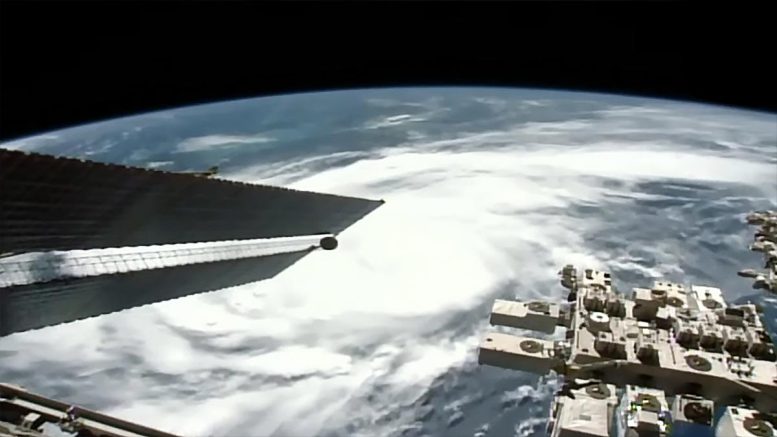
Hurricane Idalia was pictured from the International Space Station as it orbited above the Gulf of Mexico on Tuesday, August 29, 2023. Credit: NASA TV
The four newest crew members aboard the International Space Station (ISS) are adjusting to life in weightlessness while stepping up orbital maintenance duties. The seven other Expedition 69 crew mates continued their space research and health activities before September sees the orbital residents split up.
Three new astronauts and one cosmonaut, who began their station mission on Sunday, are getting up to speed with a wide array of station systems and procedures. The quartet is familiarizing itself with communications gear, computer equipment, emergency hardware, and more. They spent about half the day learning how to operate life support systems, maneuver throughout the modules, configure their crew quarters, and use the waste and hygiene compartment, also known as the station’s bathroom.
SpaceX Crew-7 Mission and Subsequent Activities
Astronauts Jasmin Moghbeli of NASA, Andreas Mogensen of ESA (European Space Agency), and Satoshi Furukawa of JAXA (Japan Aerospace Exploration Agency), and Roscosmos cosmonaut Konstantin Borisov, launched to the station on August 26 as the SpaceX Crew-7 mission. They docked to the orbital lab and entered on August 27 becoming Expedition 69 Flight Engineers and beginning a six-month space research mission.
Another station crew that has been on orbit since March 2 is scheduled to return to Earth no earlier than September 2. NASA astronauts Stephen Bowen and Woody Hoburg will respectively command and pilot the SpaceX Dragon Endeavour spacecraft during its ride back into Earth’s atmosphere and parachute-assisted splash down off the coast of Florida. Flanking the duo during the flight home will be UAE (United Arab Emirates) astronaut Sultan Alneyadi and Roscosmos cosmonaut Andrey Fedyaev.
Research and Operations
While the homebound flight engineers hand over their responsibilities and swap roles with the newest crew mates, they are also continuing space research and maintaining lab operations. Bowen swapped samples inside the Fluid Science Laboratory for a physics study. Hoburg serviced stem cell samples for an investigation seeking advanced treatments for patients with blood diseases and cancers. Alneyadi installed new hardware inside the Microgravity Science Glovebox to validate new research capabilities in space. Fedyaev tested the lower body negative pressure suit that may help humans readapt quicker to Earth’s gravity after living for several months or more in microgravity.
Longest Serving Crew’s Endeavors
The station’s longest-serving crew will soon surpass a year in space. NASA astronaut Frank Rubio treated samples for a biology study pursuing therapies for space-caused cardiac abnormalities and Earth-bound heart diseases. Roscosmos Commander Sergey Prokopyev unpacked cargo recently delivered aboard the Roscosmos Progress 85 resupply ship. He also examined Flight Engineer Dmitri Petelin’s eyes using standard medical imaging gear found in a doctor’s office on Earth. The trio is expected to complete its station mission at the end of September.



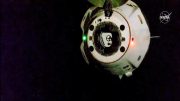

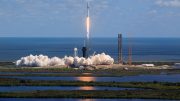
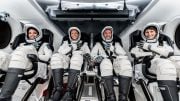
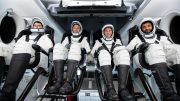
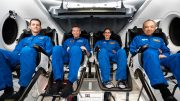
Crew 7 is a NASA crew, not SpaceX. NASA pays them for rides up to the ISS. The misuse of ‘SpaceX’ in titles to garner clicks needs to stop.
Female astronauts have fewer opportunities to fly in space than men partially because of strict lifetime radiation exposure restrictions, astronauts say.
Both male and female astronauts are not allowed to accumulate a radiation dose that would increase their lifetime risk of developing fatal cancer. A six-month mission on the International Space Station exposes astronauts to about 40 times the average yearly dose of background radiation that a person would receive living on Earth
What we need to do is quit trying to make political agendas and do like we did in the ’60s put astronauts at a head-to-head competition to find out who’s best for each mission sorry ladies!